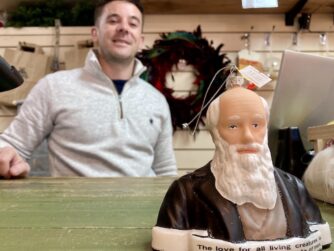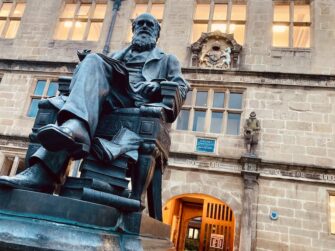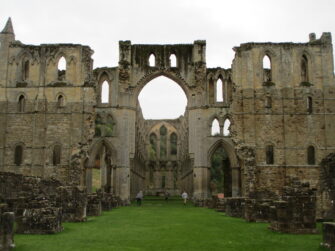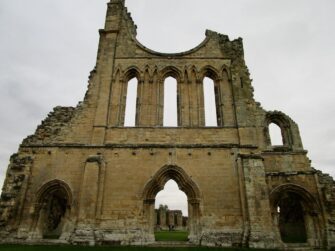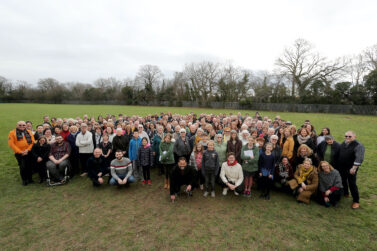
The Chester Mystery Plays return to Chester Cathedral this summer, the season coinciding with the Chester Heritage Festival.
The production comprises a huge cast of professional and non-professional performers (pictured above), many volunteering for roles on stage, in the choir, or behind the scenes.
I wrote a preview of the production, based around an interview with the actor Nick Fry, who shares the role of God with a female actor this summer.
The 24 plays, based on Bible stories, form an overarching narrative from The Creation to The Last Judgement, and are performed on a five-year cycle in Chester.
They originated in the city in 1300s, with small-scale church productions and a script in Latin. By the 1400s, the plays had been adopted by the Crafts Guilds, bodies of local tradesmen like a modern-day trade union, to be staged and performed in Middle English.
The plays formed part of the three-day Feast of Corpus Christi Fair with the players performing on pageant carts and the audience standing at fixed points around the city, such as The Cross and Abbey Gateway — locations still there today.
The Plays became associated with bawdy crowd behaviour and were banned after the Reformation, with last performance in Chester in 1578; making Chester home to the longest-running cycle in medieval times.
But the plays returned to the city as part of the 1951 Festival of Britain, and have been performed at Chester Cathedral since 2013.
Nick Fry, says:
“The Chester Mystery Plays reflect the history of both the cathedral and the city. And it’s a living history. The plays are steeped in history, yet remain of the community and for the community.”
Read the full article via The Church Times, The play that unites the city of Chester.
More info and booking: Chester Mystery Plays.
